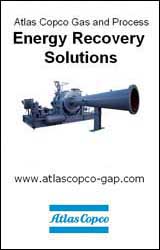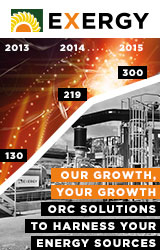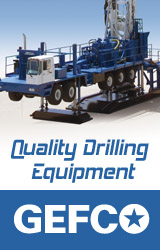Bridging the Geothermal Financing Gap: Mitigating costs & project development risks
The uncertainty surrounding the success of initial drilling for geothermal reservoirs, combined with substantial drilling costs, makes many potential, good quality geothermal projects difficult to finance. Developers and investors are all too keenly aware that many geothermal projects might never even get off the ground, never mind ultimately produce sufficient power. Lenders are often unwilling to lend, and project developers often have insufficient equity to even begin the geothermal drilling and testing process.
Geothermal is a risky business—at least at first. But, with great risk comes great reward. Geothermal projects, on a whole of life basis, are more than competitive with other energy sources, renewable or otherwise. And, these are statements that certainly seem to resonate with a lot of countries. According to a recent report from the Geothermal Energy Association, there are continued strong growth signals in the international market for geothermal power. Entitled, “2013 Geothermal Power: International Market Overview,” the report identifies 70 countries moving forward with nearly 700 geothermal power projects. By the end of the year, the global geothermal market is expected to operate 12,000 megawatts (MW) of geothermal capacity on line (www.geo-energy.org).
Despite these stats and predictions, however, geothermal projects remain difficult to finance given the initial drilling risks. The amounts of capital required to develop such a large number of projects is enormous. So, in order to tap into geothermal’s true potential there needs to be a way to encourage significantly more private sector capital to invest in the industry.
To minimize project risks in general, developing high-quality projects and securing adequate support are the keys. For geothermal projects that means finding an insurance that’s designed to be flexible enough to work efficiently and economically in a number of scenarios—and, especially, during the initial development phase where drilling results are not as expected.
The right insurance policy can offer developers security, including greater project certainty, an improved risk/reward profile, and improved project financing prospects.
So, what happens if insufficient aggregate geothermal capacity is achieved during the development phase? There are now many insurance policies that cover safe, renewable investments. However, when more challenging or risky investments are considered, the choices remain quite limited.
Managing uncertainty is often a major financial hurdle, and is one of the greatest challenges to the geothermal industry in particular. But with 70 countries and nearly 700 geothermal projects seeking development, the demand is clear. And, the potential rewards are equally clear if uncertainties can be sufficiently mitigated.
Geothermal energy provides reliable, baseload power (meaning it produces energy at a constant rate and isn’t intermittent like the sun or wind), with no (or almost no) air emissions or water waste (hot water can usually be re-injected into the reservoir). It also uses less land than other energy sources, and is extremely efficient. Geothermal power plants generally run day and night, with an uptime that exceeds 95%.
Fortunately, insurance options have begun to be developed, which are helping to mitigate project uncertainty. Modern drilling technologies and modeling techniques are allowing newer, more fitting, choices to be developed that specifically target new projects and project risks. Of course, as with any other insurances and risk mitigation instruments, researching the options and reading the fine print is a must.
For instance, one brand-new insurance option mitigates the reservoir output risk during the initial developmental drilling phase of a geothermal project. The intent is to provide structured support, which helps to bridge the financing gap at the development and appraisal drilling phases of a potential new project.
Doing so offers major advantages to the industry, and it…
- Encourages the influx of private equity and other third-party capital to finance the development stages of geothermal reservoirs by substantially improving risk-adjusted returns;
- Enables project developers to receive greater certainty that their drilling program will be sufficiently de-risked to allow for second-stage financing of the associated power plant to commence;
- Provides protection for project developers’ and other third parties’ equity, allowing it to be recycled into additional opportunities; and
- Helps monetize the value created by a project developers’ investment in the exploration and development phases.
There are, of course, several issues that must be considered in determining the availability and applicability of this insurance—including a project’s overall quality, prior drilling experience in the geothermal field(s) under consideration, and the nature of the wells to be drilled. And, like most projects and insurance policies, there are significant variations in the exact method for calculating the insured value and the threshold for success. Each policy is tailored to the specific project and developer requirements. Nonetheless, it does provide a flexible option to geothermal developers who might otherwise not be able to obtain financing, or who wish to reduce a project’s risks.
To keep premiums low, the insurance is as standardized as possible. But, the specific parameters for a given policy are meant to be flexible and project-specific enough to meet the particular needs of project developers and their financiers. By working closely together, the most cost-effective coverage can be formulated for the particular project concerned. Most importantly, this insurance option offers geothermal projects a chance to be successful, even if the initial development drilling results are not as successful as expected.
Lifetime costs of geothermal operations are lower than other types of energy, either renewable or otherwise. Properly securing the initial drilling and testing costs during the development phase through flexible and reliable insurance coverage, allows developers to do what they do best—and that’s find and develop the geothermal sites that best tap into tomorrow’s potential new energy sources.
The Parhelion Geothermal Development Drilling Aggregate Well Output Insurance is a new product developed by Parhelion, with the assistance of GeothermEx, which reimburses drilling costs over a 5+ well program if insufficient aggregate geothermal capacity is achieved.
Parhelion
www.parhelion.co.uk
GeothermEx
www.geothermex.com
Author: Nick Percival
Volume: November/December 2013











